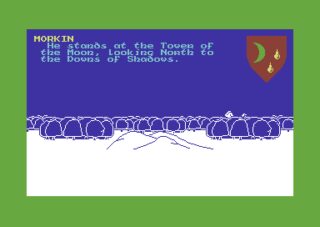Seven Cities of Gold by Ozark Softscape, is often considered one of the most groundbreaking strategy and exploration games of its era. Designed by Dan Bunten (later Danielle Bunten Berry), this title stood out for its ambition to simulate the experience of 16th-century European exploration of the New World — decades before "open world" became a genre term. The game was released in 1984 by Electronic Arts.
At its core, the game tasks the player with taking on the role of a Spanish conquistador sent to explore, colonize, and claim vast territories in the name of the Spanish crown. Starting from a port city, players must assemble supplies, recruit men, and sail into the unknown. As they reach the Americas, they are faced with the challenge of navigating uncharted terrain, interacting with native populations (peacefully or aggressively), establishing missions and forts, and returning with treasure.
The most innovative feature of Seven Cities of Gold was its open-ended structure and vast procedural world. While players could choose the historically accurate map of the Americas, they could also generate a random world to explore — a novel feature in 1984. The absence of a scoring system or traditional win condition gave players a remarkable degree of freedom. Their success depended on moral and strategic choices: exploit the land and risk native hostility, or build diplomatic relationships and focus on exploration.
Danielle Bunten Berry’s design philosophy was rooted in systems-driven gameplay and the belief that games should create dynamic stories rather than follow linear narratives. You have another example in M.U.L.E.. Her work on Seven Cities of Gold would later influence other developers, most notably Sid Meier. Meier cited this game as a key inspiration for his own work, especially Sid Meier's Pirates! and Sid Meier's Civilization. Both games adopted and expanded on the ideas of exploration, diplomacy, and emergent gameplay that Seven Cities of Gold pioneered.
The game was originally released for the Atari 8-bit family, but it was later ported to the Commodore 64, Apple II and Amiga, retaining most of its features. In all versions, the game was praised for its large, scrolling world map and unique blend of action and strategy — a technical and conceptual achievement for its time.
Seven Cities of Gold is often remembered not just as a classic game but as a turning point in game design, proving that computer games could simulate complex human experiences and historical themes. Its legacy lives on through countless strategy and simulation titles that followed its path.
Dani wrote this about the game:
There are several things I'm proud of about that game. Unlike most strategy-adventure games then (and now as well) which load the player with numerous economic and logistical decisions, it only used four commodities to model the constraints and opportunities facing the Conquistadors (men, food, trade goods and gold). I also like the way I was able to reflect the unique interactions between natives and Conquistadors when they shared neither a language nor cultural values in common. I came up with a simple arcade element which also included a number of subtle "secret" opportunities that I was quite gratified to learn that folks found on their own. Finally, the fact that our "New World" was randomly generated (and so large it required disk caching and overlays) made exploring a challenge fraught with peril and surprises. It sufficiently captured the sense of panic that comes from being lost in the wilderness and running out of supplies as well as the joy of rescue (which was something I experienced once backpacking and wanted to make a touchstone of this design).
How to play the Atari 8 bit version
Press CTRL to start the game. Once the game asks you to insert the Map disk, press F1 to open the emulator menu, open the Disk section and select "sideB.atr" in the first drive. Then continue.













